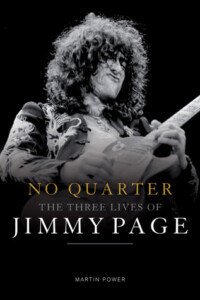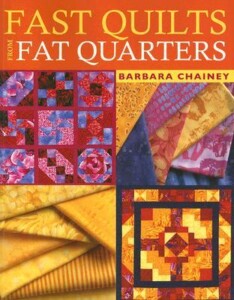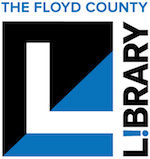March is ending, meaning we have now survived 3 of the total 12 months in a year. To observe the passage of one-quarter of the year, I’ve made the following list of books on the theme of quarters, in one fashion or another.

Using new and exclusive interviews Martin Power tells the full story of Jimmy Page’s long career in No Quarter: the Three Lives of Jimmy Page. Starting with the early Sixties session scene when the teenage Page contributed to recordings by The Who, The Rolling Stones, Tom Jones and many more, the author goes on to explore Page’s time in The Yardbirds, the band that would metamorphose into the legendary Led Zeppelin. Supported by album reviews, rare photographs, a full discography and candid conversations with Page’s friends, managers and musical collaborators, No Quarter represents the most comprehensive and up-to-date biography yet written about Jimmy Page—a “one man guitar army” and true music legend. The text is augmented and enriched by multiple sections containing photographs (both color and black-and-white) of Page and his cohort. A titan of the musician biography field, No Quarter stands one hair under 700 pages and contains an attention to detail so fine that you yourself will be an expert in Page’s life and music after reading it.
 As the crafters among you may know already, the library has a selection of needlecraft manuals, ranging from techniques for beginners to patterns for specialized projects. Fast Quilts from Fat Quarters by Barbara Chainey is one such book in our collection. Featuring 12 main projects, this work shows how the concept of quiltmaking can be taken in different directions. It includes step-by-step instructions for the projects and a range of possibilities for blocks and block settings that combine with practical information on choosing fabrics and colors. Readers say the quilt block diagrams are so helpful that they wanted permanent copies to keep in their craft rooms! This book contains customizable project ideas with mix-and-match elements, and each project is followed by a gallery of quilt photos so you can get a sense of how it might turn out depending on the choices you make during construction. I am not a quilter myself, but if you make anything from this book you’ll have to let me know!
As the crafters among you may know already, the library has a selection of needlecraft manuals, ranging from techniques for beginners to patterns for specialized projects. Fast Quilts from Fat Quarters by Barbara Chainey is one such book in our collection. Featuring 12 main projects, this work shows how the concept of quiltmaking can be taken in different directions. It includes step-by-step instructions for the projects and a range of possibilities for blocks and block settings that combine with practical information on choosing fabrics and colors. Readers say the quilt block diagrams are so helpful that they wanted permanent copies to keep in their craft rooms! This book contains customizable project ideas with mix-and-match elements, and each project is followed by a gallery of quilt photos so you can get a sense of how it might turn out depending on the choices you make during construction. I am not a quilter myself, but if you make anything from this book you’ll have to let me know!

The novels of Joanne Harris are a literary feast for the senses. Rich and dark, Fire Quarters of the Orange is a novel of mothers and daughters of the past and the present, of resisting, and succumbing. When Framboise Simon returns to a small village on the banks of the Loire, the locals do not recognize her as the daughter of the infamous Mirabelle Dartigen — the woman they still hold responsible for a terrible tragedy that took place during the German occupation decades before. Although Framboise hopes for a new beginning. She quickly discovers that past and present are inextricably intertwined. Nowhere is this truth more apparent than in the scrap book of recipes site has inherited from her dead mother. Framboise re-creates her mother’s dishes, which she serves in her small creperie. And yet as she studies the scrapbook — searching for clues to unlock the contradiction between her mother’s sensuous love of food and often cruel demeanor — she begins to recognize a deeper meaning behind Mirabelle’s cryptic scribbles. Within the journal’s tattered pages lies the key to what actually transpired the summer Framboise was nine years old. Ebook copies are available on OverDrive and hoopla.
 For the fourth quarter of our four-part list (dare I say… the final quarter), we turn to The Mystery of Three Quarters. The world’s most beloved detective, Hercule Poirot, the legendary star of Agatha Christie’s Murder on the Orient Express returns, with Christie’s mantle picked up by renowned mystery author Sophie Hannah. Poirot returns home after an agreeable luncheon to find an angry woman waiting to berate him outside his front door. Her name is Sylvia Rule, and she demands to know why Poirot has accused her of the murder of Barnabas Pandy, a man she has neither heard of nor ever met. Poirot is shocked, because he too has never heard of any Barnabas Pandy, and he certainly did not send the letter in question. Shaken, Poirot goes inside, only to find that he has a visitor waiting for him — a man called John McCrodden who also claims also to have received a letter from Poirot that morning, accusing him of the murder of Barnabas Pandy. Poirot wonders how many more letters of this sort have been sent in his name. Who sent them, and why? More importantly, who is Barnabas Pandy, is he dead, and, if so, was he murdered? Available in large print, audio CD, OverDrive ebook, and hoopla audiobook.
For the fourth quarter of our four-part list (dare I say… the final quarter), we turn to The Mystery of Three Quarters. The world’s most beloved detective, Hercule Poirot, the legendary star of Agatha Christie’s Murder on the Orient Express returns, with Christie’s mantle picked up by renowned mystery author Sophie Hannah. Poirot returns home after an agreeable luncheon to find an angry woman waiting to berate him outside his front door. Her name is Sylvia Rule, and she demands to know why Poirot has accused her of the murder of Barnabas Pandy, a man she has neither heard of nor ever met. Poirot is shocked, because he too has never heard of any Barnabas Pandy, and he certainly did not send the letter in question. Shaken, Poirot goes inside, only to find that he has a visitor waiting for him — a man called John McCrodden who also claims also to have received a letter from Poirot that morning, accusing him of the murder of Barnabas Pandy. Poirot wonders how many more letters of this sort have been sent in his name. Who sent them, and why? More importantly, who is Barnabas Pandy, is he dead, and, if so, was he murdered? Available in large print, audio CD, OverDrive ebook, and hoopla audiobook.
